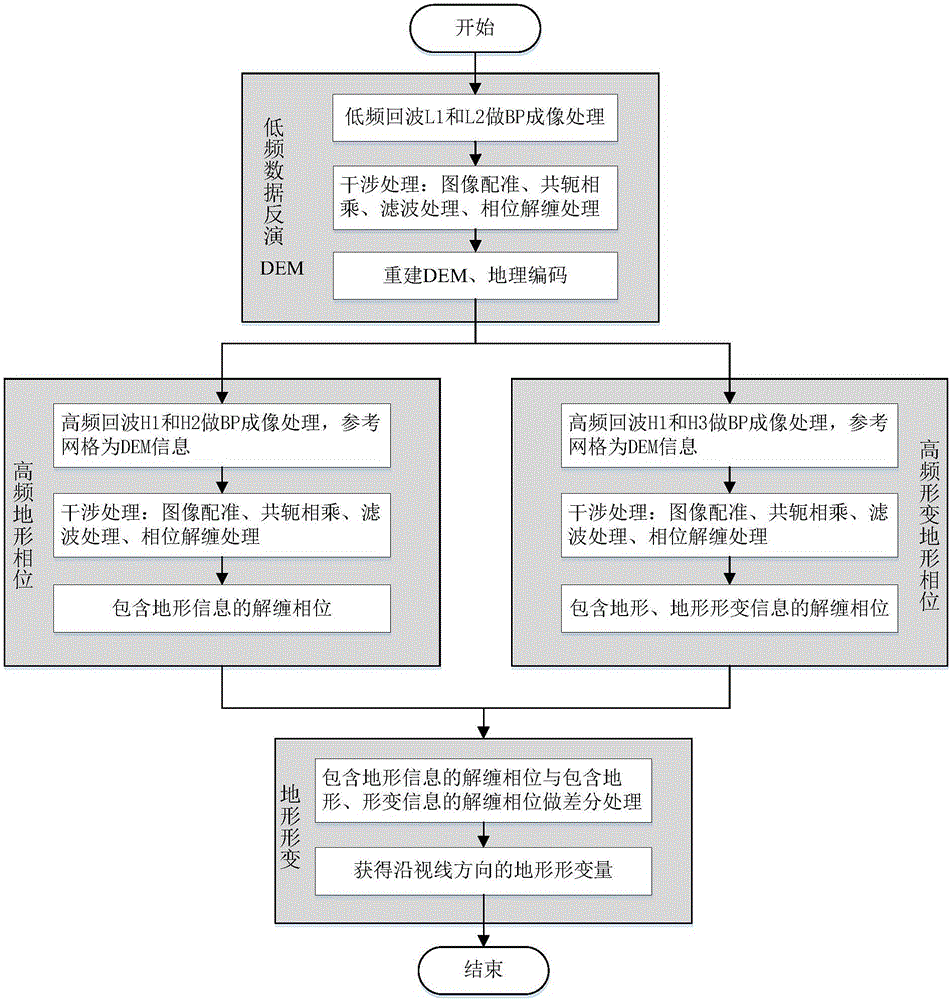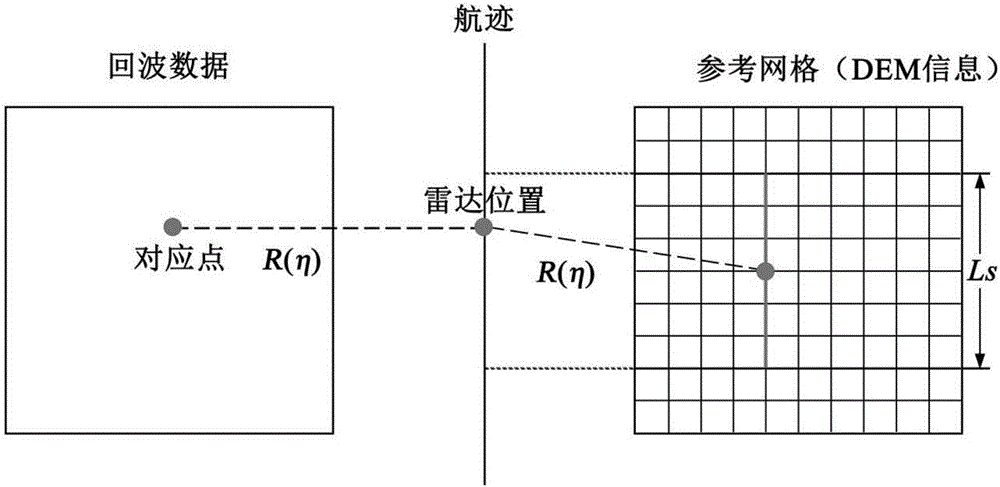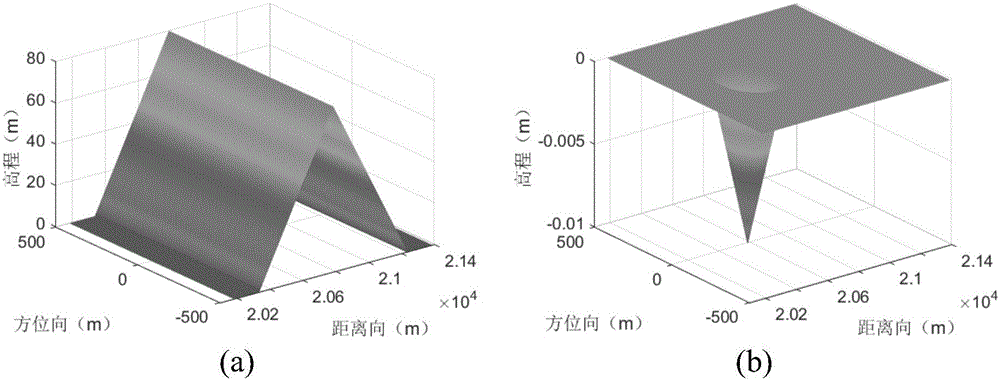Multi-frequency data processing-based airborne D-InSar deformation detection method
A technology of data processing and detection method, applied in the field of radar, can solve the problems of the contradiction between detection accuracy and data processing difficulty, the low flight height of the airborne platform, and the difficulty of phase unwrapping, etc., so as to improve the detection accuracy and stability of the system, simplify the The effect of interfering with the data processing process and improving the detection accuracy of the system
- Summary
- Abstract
- Description
- Claims
- Application Information
AI Technical Summary
Problems solved by technology
Method used
Image
Examples
Embodiment 1
[0086] For a front and back slope scene, a concave conical deformation field is used for terrain deformation detection, and the radar imaging method is front and side view. The deformation field information such as image 3 As shown, where (a) is terrain information, and (b) is deformation field information. The distance length of the flat area on both sides of the front and rear slope terrain is 150m, the azimuth range is 1000m, the distance range is 1200m, the slope height is 80m, the deformation cone radius is 173m, and the height line is 10mm. The system parameters are set as follows: the height of the airborne platform is 12km, the platform speed is 150m / s, the downward angle of view is 60°, the pulse width of the FM signal is 500us, the bandwidth of the FM signal is 160MHz, the length of the antenna in the azimuth direction is 6m, the sampling rate in the azimuth direction is 95, and the baseline B1 is 10m , baseline angle α 1 is 0, the baseline B2 is 5m, and the basel...
PUM
 Login to View More
Login to View More Abstract
Description
Claims
Application Information
 Login to View More
Login to View More - R&D
- Intellectual Property
- Life Sciences
- Materials
- Tech Scout
- Unparalleled Data Quality
- Higher Quality Content
- 60% Fewer Hallucinations
Browse by: Latest US Patents, China's latest patents, Technical Efficacy Thesaurus, Application Domain, Technology Topic, Popular Technical Reports.
© 2025 PatSnap. All rights reserved.Legal|Privacy policy|Modern Slavery Act Transparency Statement|Sitemap|About US| Contact US: help@patsnap.com



